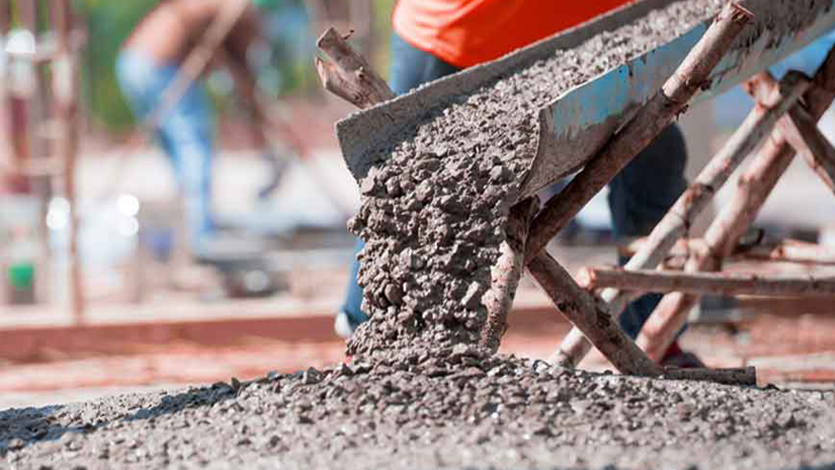
Ready Mix Concrete
Ready-mix concrete (RMC) is a form of concrete that is made at a batching plant, a part of a cement factory, in accordance with a predetermined ratio and then transported to a job site by a truck mounted with mixers. As a consequence, specialised concrete mixes may be created and used on building sites since the combination is accurate. Although the first facility that made ready-mix concrete was constructed in the 1930s, the business didn’t start to take off until the late 1980s. It has substantially expanded ever since.
Because of the amount that can be produced with accuracy in combination proportions and also because there is less misunderstanding on the job site, ready-mix concrete is occasionally preferable to on-site concrete mixing. Utilizing a predetermined concrete mixture limits flexibility in the supply chain and the actual concrete’s constituent parts.
For commercial use, ready-mix concrete is sometimes referred to as “customized concrete products. Concrete that is made expressly to be delivered to the customer’s building site in a freshly mixed, plastic, or unhardened form is known as ready-mixed concrete (RMC). Portland cement, water, and aggregates like sand, gravel, or crushed stone make up the concrete itself. Each of these components is purchased separately and combined on site to create concrete at conventional construction sites. In order to buy and sell ready-mixed concrete, volume is used, which is often stated in cubic meters (or cubic yards in the US).
Contents:
- Process
- Advantages
- Disadvantages
- Volumetric Mixer
Process of Ready-mix concrete
In order to produce ready-mix concrete of the highest quality, cement, aggregates, sand, water, and other chemicals are weighed and batched at a factory in the middle of nowhere. After being treated, the concrete is subsequently transported in transit mixers to the building site and is ready for use right away. To create high-quality concrete, the autonomous plant carefully checks the weight of the batch, the water-cement ratio, the dose of admixtures, and the moisture content.
In a well-equipped laboratory attached to the factory, all ingredients used to prepare ready-mix concrete are extensively examined for their quality and physical characteristics in accordance with the international standard codes. The moisture probe quantifies the water content of the aggregates and sand. This subsequently aids in determining the quantity of water to be added for the mix’s creation. To verify that every batch of concrete leaving the plant complies with varied mix designs according to the client’s requirements with different grades of concrete, trial mixes are made and evaluated.
Advantages of ready-mix concrete
Following are the advantages of ready-mix concrete:
-
- Ready Mix Concrete (RMC) allows speedy construction through programmed delivery at site, mechanized operation with consequent economy.
- RMC reduces the labour cost and site supervising cost.
- RMC comes with consistency in quality through accurate & computerized control of sand aggregates and water as per mix designs.
- Production of RMC helps in minimizing cement wastage due to bulk handling.
- Production of RMC is relatively pollution free.
- Reduced project time resulting in savings in all aspects.
- Proper control and economy in use of raw material resulting in saving of natural resources.
Disadvantages of ready-mix concrete
Disadvantages of ready-mix concrete
-
- The materials are batched at a central plant, and the mixing begins at that very plant. So, the travelling time from the plant to the site is critical over longer distances. Some sites are just too far away, which can risk that ready mix concrete may become unusable due to setting.
- It will generate additional road traffic. Generally, Ready Mix Trucks are large in size and may cover lot of area in the road blocking other traffic. Furthermore, access roads and site access have to be able to carry the greater weight of the ready-mix truck plus load. (Green concrete is approx. 2.5 tonne per m³.) This problem can be overcome by utilizing so-called ‘mini mix’ companies which use smaller 4m³ capacity mixers able to reach more-restricted sites.
- Concrete’s limited time span between mixing and curing means that ready-mix should be placed within 210 minutes of batching at the plant. Modern admixtures can modify that time span precisely, however, the amount and type of admixture added to the mix is very important.




